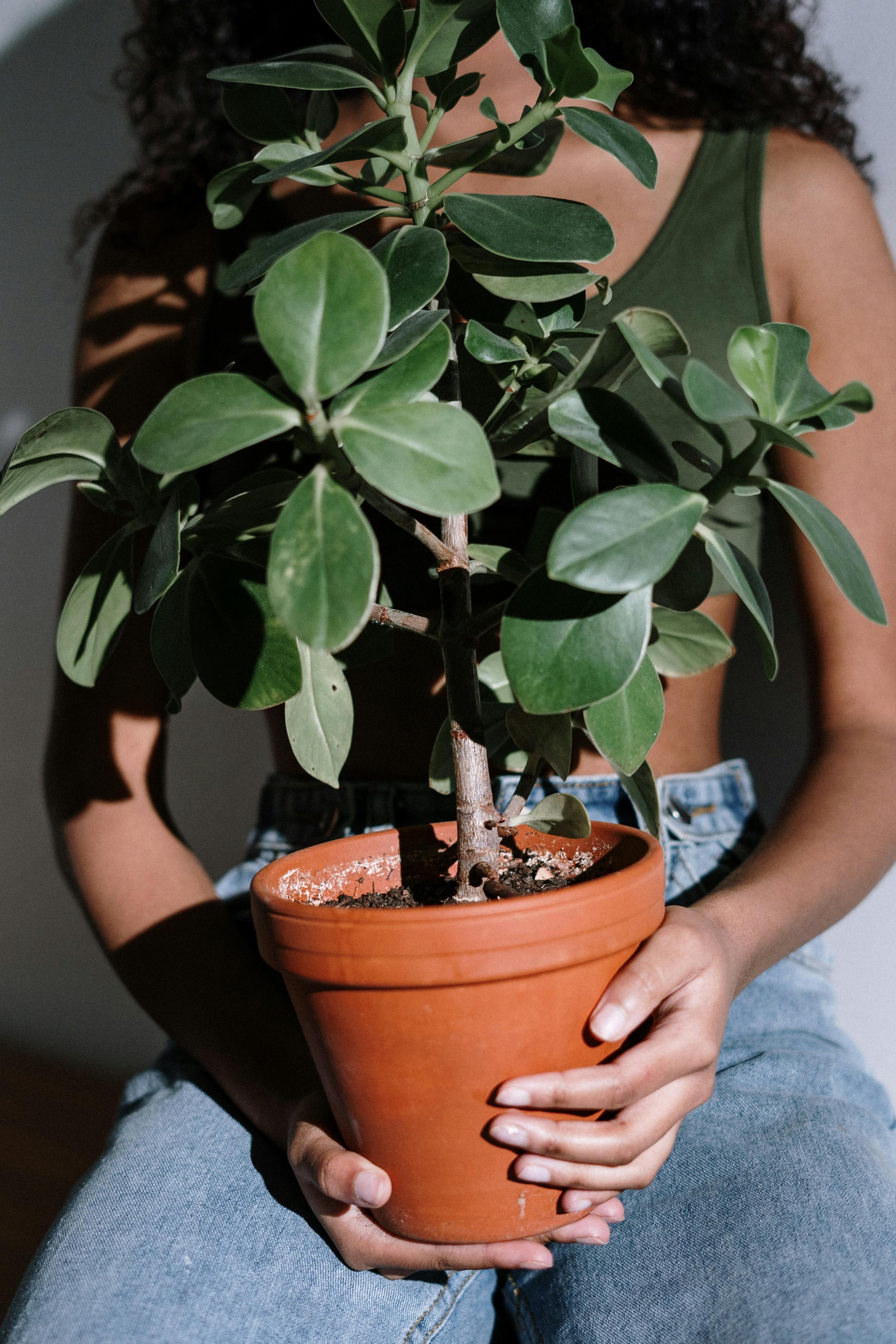No, Your Plant Doesn’t Hate You!
Ever said, “Plants just hate me”? You’re not alone!
Many people feel like they’re “plant killers” who just can’t keep a green friend alive. But here’s the truth: plants don’t hate you, and no one is born with a green thumb.
Keeping plants healthy isn’t about luck—it’s about understanding that plants are living things with needs that require some attention. This article will explain why your plant struggles shouldn’t discourage you and how a shift in perspective can help you grow alongside your plants.
Why It’s Not About “Green Thumbs”
For a long time, we’ve heard about people having or lacking a “green thumb,” as though plant care is some magical ability only a few people are born with.
In reality, plant care is a skill anyone can learn with patience, attention, and practice. Like learning any new hobby—whether it’s cooking, painting, or playing an instrument—taking care of plants involves trial and error. Over time, you learn to pick up on plant cues, adjust your techniques, and find the right care approach.
Understanding that Plants Are Not “Set and Forget”
Unlike a lamp or picture frame, plants are living organisms, each with unique needs that change based on light, water, temperature, and season. Treating a plant as “set and forget” decor is a quick way to see it struggle, not because it “hates” you but because it’s not getting the care it requires. Embracing the process of learning about your plant’s needs can be incredibly rewarding and helps you develop a responsive, mindful approach.
Some Examples of Plant Needs
Watering: Different plants have vastly different water needs. A cactus may only need watering every few weeks, while a fern needs consistent moisture.
Lighting: Low-light plants, like snake plants, do well in shady spots, but plants like fiddle-leaf figs need bright, indirect light to thrive.
Humidity: Tropical plants, like calatheas and ferns, thrive in humidity, while succulents and cacti are adapted to drier air.
When you understand these needs, caring for your plant feels less mysterious and more like a collaboration.
Shifting Your Mindset: From “Failing” to “Learning”
One of the biggest barriers for new plant parents is the feeling of failure when a plant dies or struggles. Instead of viewing these experiences as defeats, consider them as lessons.
Every plant that doesn’t make it offers insight into what might not have worked, and these lessons accumulate over time, helping you build a better “green thumb.”
Common Mistakes and How to Learn from Them
Overwatering: Often the result of being overly attentive. Plants like pothos and snake plants actually prefer to dry out between waterings.
What to Learn: Adjust your watering schedule based on plant type. Check soil moisture before watering.
Underestimating Light Needs: Many people assume all plants thrive indoors without realizing that most need more light than we think.
What to Learn: Pay attention to natural light in your space. South- and west-facing windows provide the brightest light, while east-facing is moderate, and north-facing windows offer the least light.
Ignoring Soil and Pot Requirements: Using the wrong soil or potting in containers without drainage can lead to poor root health.
What to Learn: Use soil suited to your plant type, like a chunky mix for orchids or well-draining soil for succulents.
By using each experience to fine-tune your plant care skills, you gradually build the understanding and confidence needed to care for a variety of plants.
Real-Life Examples: How to “Hear” What Your Plants Are Telling You
Plants often show physical signs when they’re not thriving. Learning to “listen” to these cues helps you adjust your care routine and meet their needs better. Here are a few common signs to look for and what they might mean:
Wilting or Drooping Leaves: Often a sign of underwatering, but can also indicate overwatering.
Yellowing Leaves: Could be due to overwatering, nutrient deficiency, or lack of light. Look at the context and history of care to determine which.
Brown Leaf Edges: A sign of low humidity, especially in tropical plants like ferns and calatheas.
By observing these cues and adjusting accordingly, you can grow more in tune with each plant’s needs, developing a care routine that works.
Embracing Plant Care as a Journey, Not a Destination
The goal isn’t to be a perfect plant parent but to develop a meaningful relationship with your plants, learning as you go. Like any skill, plant care improves with experience and practice. Each plant presents new lessons, whether it’s learning to care for a sun-loving cactus or a moisture-loving fern.
Tips for Growing with Your Plants
Start Simple: Begin with resilient plants like pothos, snake plants, or ZZ plants, which are forgiving of minor missteps.
Learn Gradually: As you feel more confident, try adding plants with slightly different needs, like succulents or ferns, to your collection.
Document Your Care: Keep a journal or use an app to track watering, fertilizing, and lighting. This helps you spot patterns and make informed adjustments.
Remember, even experienced plant enthusiasts lose plants now and then. Each “failure” adds to your understanding and makes you a more skilled caretaker.
Shifting from “Plant Killer” to “Plant Learner”
Houseplants don’t hate you. With time and attention, anyone can become a successful plant parent. By learning from each plant’s needs and cues, you build the skills to keep a thriving collection. Embrace the journey, learn from your experiences, and enjoy the calming, rewarding process of caring for your green companions.
Your journey with plants is unique, filled with discovery, growth, and maybe a few setbacks. So, give yourself the space to learn, and remember that plant care is as much about the process as the outcome.
Have you experienced a “plant fail” that taught you something new? Share your story in the comments!






